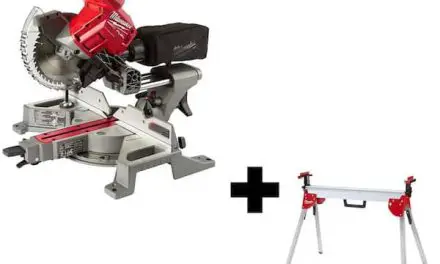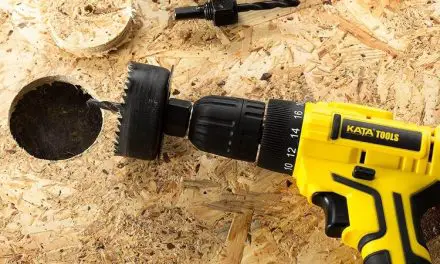Miter saw is ideal for making clean junctions on wood stock. There are two basic types of miter saws: a miter saw and a compound miter saw. There are differences between both, such as a sliding miter saw, where the saw motor and the blade can be pulled forward a short distance, such as a radial saw. Whether your saw is a compound miter saw, a sliding rolling saw or a fixed drive unit, the rules and things you can do with the saw are similar. Now you’ll get an idea about how to use a sliding compound miter saw.
How to Use a Sliding Compound miter saw?
Miter saws are an invaluable tool for any serious DIYer. This guide will teach you everything you need to know about how to use your sliding compound miter saw safely and effectively.
1. Safety First:
Before attempting any project, it is essential that you understand the safety precautions associated with operating a sliding compound miter saw. Always wear protective goggles when operating the saw as flying debris such as wood chips could injure your eyes. Wear hearing protection if possible, as these machines tend to be quite loud. Also, never reach over the blade while it is in operation, and always unplug the machine when not in use.
2. Choosing the Correct Blade:
It is essential that you choose the correct blade for your saw and your project to ensure optimal results. There are many different types of blades available for sliding compound miter saws, ranging from general-purpose blades to specialized blades designed for certain materials such as aluminum or plastic. Make sure you read the manufacturer’s instructions before attempting any type of cut with a new blade.
3. Setting Up Your Saw:
Before making any cuts, make sure that your saw is properly set up and aligned. This includes ensuring that the fence is parallel to the blade, as well as adjusting the blade height and bevel. Once your saw is set up, it’s time to start making cuts!
4. Making Straight Cuts:
Straight cuts are the easiest type of cut to make with a sliding compound miter saw. To do this, position your workpiece against the fence so that it is flush against both sides and aligned with the mark on the board where you want to make the cut. Turn on the saw and slowly move it forward until it makes contact with the workpiece. Then, continue pushing it forward until the blade has made its way through the material. Once finished, turn off the saw and wait for all moving parts to come to a complete stop before removing your workpiece from the machine.
5. Making Cross Cuts:
Cross cuts are slightly more difficult than straight cuts and require you to use both the blade height adjustment and miter angle adjustment. To do this, first, adjust the blade height to the desired depth of cut and set the miter angle according to your desired angle of cut. Then, position your workpiece as described in the previous section and make sure it is firmly held in place before turning on the saw. As with making a straight cut, slowly move the blade forward until it has made its way through your material. Afterward, turn off the saw and wait for all moving parts to come to a complete stop before removing your workpiece from the machine.
6. Making Bevel Cuts:
Bevel cuts are slightly more complex than straight and cross cuts. To do this, adjust the blade height and miter angle as previously described. Then, set the bevel angle according to the desired cut and secure the workpiece against both sides of the fence. Before turning on the saw, make sure that it is firmly held in place by pressing down on one side of it while pushing forward with your opposite hand. Slowly move the blade forward until it has made its way through your material and then turn off the saw before removing your workpiece from the machine.
Watch More:
Sliding compound miter saws can be a great asset for any serious DIYer. These saws should handle carefully to get safe and effective results. By following the above instructions, you can easily learn how to make straight, cross, and bevel cuts with your saw in no time!
A sliding compound mite saw is just a fantastic machine that will assist you with your woodwork-cutting journey. You’ll get so many brands available in the market. So choose your preferred machine according to your cutting demand. You may take advice from an expert who already uses this type of saw machine and remember to follow our guidelines mentioned above. Happy cutting!



















